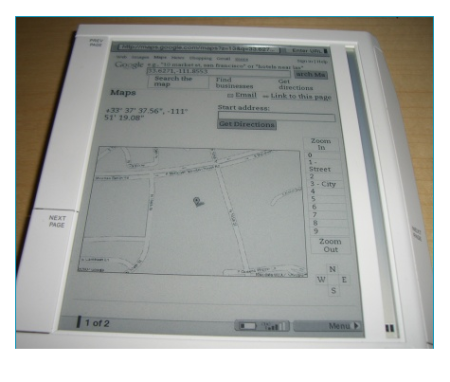Digital readers will save writers and publishing, even if they destroy the book business.
By Marion Maneker
Amazon announced the second iteration of its Kindle electronic reading device last month. The next day, HarperCollins announced that it would close its Collins division to substantially reduce head count and limit the number of books it acquires to publish. It was almost as if Harper was acting out a ritual dismemberment upon hearing the news.
There was, in fact, no cause and effect between the two events—but there ought to have been. The Kindle may be little more than a novelty device today. With each passing day, though, it begins to have the potential to change the business model for writers of all types and stripes. As for Harper, the layoffs were the caboose in a long train of publishing industry firings that began last fall. Think of the causal chain here as the beginning of the beginning for digital delivery of written works and the beginning of the end for the corporate publishing conglomerate.
Why are the publishers cutting back? Sales aren't exactly down across the board. Look at Simon and Schuster, one of the first to cut jobs: Its sales were up 1 percent in the fourth quarter (though profits were down). Nor is S&S on the defensive. In her year-end letter to employees, S&S head Carolyn Reidy exhorted her employees not to turn tail and run: "This is precisely the moment—when established routines do not yield the customary results—that we must take chances and embrace risk."
The risky part of the business—best-sellers—isn't really the problem. Though how to manage that risk has become a serious problem for several houses. What's eating into publishers' profits is the slowing of backlist sales. Penguin CEO David Shanks told the industry's news hub, Publisher's Marketplace, that backlist sales—where they get most of their profits—were slow in October and November. In December they were back to normal based on the success of a series of vampire books, which is really backlist selling as frontlist.
Backlist is slowing because traffic at the bookstore chains is slowing. Barnes & Noble's holiday sales were down nearly 8 percent as measured by same-store comps. Retail was bad everywhere in the fourth quarter, but for the year, those comps were down more than 5 percent. Ironically, the book chains are falling victim to the same disease that killed the independent bookstore. High-margin sales—big best-sellers that come in the back of the store in a shipping box and leave through the front with a customer in the space of a few hours or days—have migrated to other outlets. When a book is running hot, most sales don't take place in bookstores at all. They're at Costco and newsstands and grocery stores and dozens of other nonbook book outlets. Meanwhile, back at the Barnes & Noble, the low-margin books—those worthy backlist titles for which the store must pay a lot to store on the shelves for weeks or years just so they'll be waiting for you when you finally come looking for them—are clogging up the system.
Think of it this way: Borders and Barnes & Noble pay lots of rent on large stores filled with backlist books in the hope that the cornucopia of titles will attract you to them. But, in truth, you go there to read magazines, drink coffee, and loaf. You're not buying many of those backlist books when you're there.
Wednesday, June 22, 2011
Subscribe to:
Posts (Atom)


